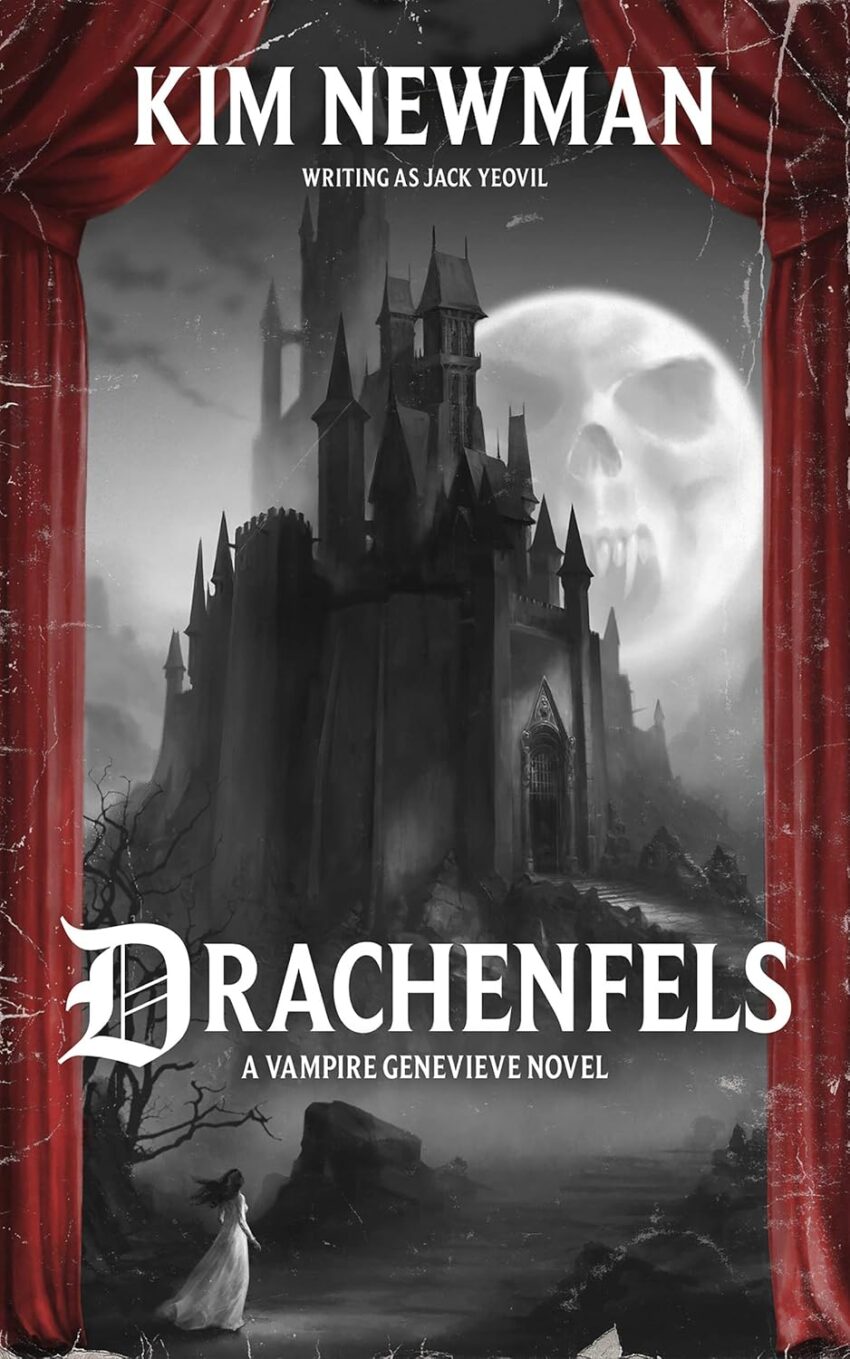Kim Newman’s Drachenfels, written under the pseudonym Jack Yeovil, is a classic entry into the Warhammer Fantasy universe, blending gothic horror, dark humor, and mystery in a tale that stands apart from the franchise’s usual fare. First published in 1989, the novel offers a uniquely theatrical take on the Warhammer setting, focusing on characters, atmosphere, and the macabre rather than large-scale battles or sprawling politics. However, while Drachenfels is undeniably imaginative, its pacing and stylistic choices may not appeal to all readers.
Plot:
The story centers on a group of adventurers who reunite years after a perilous quest to kill the titular Constant Drachenfels, a nearly immortal and immensely powerful necromancer. Led by the enigmatic playwright Detlef Sierck, they return to Drachenfels’ fortress to stage a theatrical reenactment of their victory over the sorcerer. The play is intended to commemorate their triumph, but as rehearsals begin, it becomes clear that Drachenfels’ evil has not been entirely vanquished, and dark forces are at work to ensure his legacy endures.
The narrative alternates between the present-day preparations for the play and flashbacks detailing the original quest to defeat Drachenfels. This structure provides insight into the characters’ shared history while maintaining a growing sense of dread as past secrets and betrayals are revealed. The fortress of Drachenfels itself becomes a character, its shadowy halls and oppressive atmosphere underscoring the lingering corruption of its master.
While the setup is intriguing, the plot’s pacing can feel uneven. The theatrical framing device is fresh and creative, but it occasionally slows the momentum, especially for readers expecting a more action-driven story. However, the tension and mystery build effectively, culminating in a climax that blends horror and spectacle, though some elements of the resolution might feel melodramatic or overly abrupt.
Characters:
One of Drachenfels’ strengths lies in its ensemble cast of flawed, haunted, and colorful characters.
- Detlef Sierck, the protagonist, is a talented but egotistical playwright whose creative ambition and skepticism of the supernatural make him an unconventional hero. His journey from dismissive artist to reluctant leader adds depth to the narrative.
- Genevieve Dieudonné, a vampire who walks the fine line between humanity and her darker instincts, serves as both a moral compass and a reminder of the novel’s gothic underpinnings. Her internal struggle and composed demeanor make her a standout character, providing a fascinating contrast to the often bombastic world of Warhammer.
- Vargr Breughel, a disillusioned mercenary and one of the original adventurers, embodies the archetype of the aging warrior plagued by past regrets, adding gravitas to the group dynamics.
- The supporting cast, including a scheming nobleman and various actors and crew members involved in the play, injects moments of humor and tension. These characters serve as both comic relief and victims of Drachenfels’ lingering influence, highlighting the novel’s blend of tones.
Drachenfels himself is a looming, malevolent presence throughout the story. Although his physical appearances are limited, his influence is felt in every scene, making him a chilling and memorable antagonist.
While the characters are distinct and engaging, some of their interactions and development feel underexplored, especially given the novel’s relatively short length. Certain relationships, such as those between Detlef and Genevieve or among the original adventurers, could have benefited from more nuanced exploration.
Prose:
Kim Newman’s prose is a double-edged sword. His writing is richly descriptive, painting vivid pictures of Drachenfels’ fortress, the bustling cities of the Empire, and the eerie, otherworldly elements that pervade the narrative. The gothic tone is pitch-perfect, immersing readers in a world of crumbling castles, flickering candlelight, and whispered conspiracies.
However, the prose can also feel overwrought at times, with some passages veering into verbosity or indulgence in theatrical flair. This suits the story’s themes and setting but may alienate readers looking for a more streamlined narrative. Newman’s dialogue is sharp and often witty, particularly when Detlef’s sardonic humor or the actors’ backstage squabbles come into play. Still, some of the exchanges can feel stilted or melodramatic, especially during the more dramatic revelations.
Overall Summary and Verdict:
Drachenfels is an atmospheric and inventive Warhammer Fantasy novel that stands out for its focus on gothic horror, theatrical storytelling, and character-driven drama. Kim Newman’s exploration of morality, legacy, and the lingering power of evil gives the novel a depth not always seen in franchise fiction. The plot’s framing device is unique and engaging, though its pacing may test the patience of readers expecting a more traditional fantasy adventure.
The characters, particularly Detlef and Genevieve, carry the story with their complexity and distinctive voices. However, the supporting cast and relationships could have been more fully developed to maximize the emotional impact of the story’s darker moments. Newman’s prose, while evocative and fitting for the tone, occasionally leans too heavily into theatricality, which may not appeal to all readers.
Verdict: Drachenfels is a worthy read for fans of Warhammer Fantasy who enjoy gothic horror, character-driven narratives, and a slower, more reflective approach to storytelling. While it may not appeal to those seeking fast-paced action or epic battles, its atmospheric setting and unique premise make it a standout entry in the Warhammer Fantasy canon. For readers willing to embrace its theatrical flair and deliberate pacing, Drachenfels offers a haunting and memorable tale.
And remember, Frontline Gaming sells gaming products at a discount, every day in their webcart!



